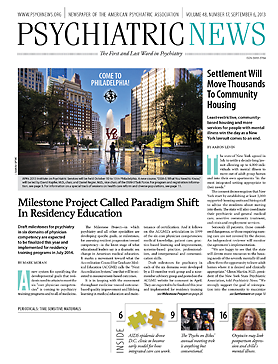Children in a community sample receiving two or more psychiatric medications were more likely to have greater severity of illness and comorbidity than those receiving one or no medications.
Meanwhile more than a third of this sample of children visiting an outpatient clinic were receiving no medications at all, even though nearly all of them had at least one psychiatric diagnosis; close to three-quarters of the children receiving no medication at the time of assessment had two diagnoses.
The findings from a naturalistic study of community-based prescribing practices for children with psychiatric disorders would appear to refute the prevalent notion of overmedication of children. The study was published online July 15 in Psychiatric Services.
The report was an analysis of the Longitudinal Assessment of Manic Symptoms (LAMS) funded by the National Institute of Mental Health. This is a study of a clearly defined group of cases using semistructured diagnostic interviews to determine diagnoses and service utilization. In this way, the study was able to link prescribing patterns to diagnosis and functioning in a community sample in a way that other pharmaco-epidemiological studies—some of which have suggested overprescription of medication to children—were not, according to lead author Robert Kowatch, M.D., Ph.D., of the Department of Psychiatry at Ohio State Wexner Medical Center and Nationwide Children’s Hospital in Columbus.
“These results contrast with findings from some studies of large pharmaco-epidemiologic claims–based datasets that suggested that psychotropic medications are overprescribed,” Kowatch and colleagues noted. “In the LAMS sample, when medications were prescribed, they appeared linked meaningfully to diagnoses and functioning in ways broadly consistent with evidence-based practices and with rational approaches to intervention in the community.”
The LAMS study consisted of all children between the ages of 6 and 12 years-11 months who were making a first visit to one of nine child outpatient clinics associated with four Midwest university-affiliated medical centers. Parents were asked to fill out the 10-item Parent-Completed General Behavior Inventory Mania Form and answer questions about sociodemographic characteristics.
For every 10 children who met criteria for elevated mania, one child was selected as a potential comparator. The final sample consisted of 698 participants who met the criteria and agreed to participate and for whom complete information was available. A range of structured and tested instruments was used to link prescribing patterns to current and past psychiatric diagnoses, functioning, symptomatic severity, family factors, medication history, and mental health services use.
Use of four classes of medications was assessed: mood stabilizers, antidepressants, antipsychotics, and stimulants. Polypharmacy was defined as use of two or more medications.
The results showed that 201 of 698 participants (29 percent) were prescribed two or more medications. These participants had lower Children’s Global Assessment Scale scores, more comorbid disorders, and higher baseline parent-reported mood symptoms than those prescribed no or one medication.
White youth were three times as likely as nonwhite youth to be receiving two or more psychotropics, even after adjustment for other demographic and clinical characteristics. Of the 262 participants (38 percent of the sample) not being treated with medications, 252 (96 percent) had a diagnosis of at least one psychiatric disorder, while 194 (74 percent) had two or more diagnoses.
Patients receiving two or more medications were also more likely to have a bipolar or pervasive developmental disorder, to have been placed in special education, or to have been psychiatrically hospitalized. The most common diagnoses for those 262 children not receiving any medication were attention-deficit/hyperactiviity disorder, disruptive behavior disorders, anxiety disorders, depressive disorder, and elimination disorders. Children insured by Medicaid were less likely to receive multiple medications than children not insured by Medicaid.
“The finding that a majority of participants with bipolar disorder were treated with antipsychotics, mood stabilizers, or both is consistent with practice patterns in other areas of the country and with current treatment guidelines for pediatric bipolar disorder,” Kowatch and colleagues noted. “Participants without bipolar disorder were treated mainly with stimulant medications. Unlike other studies, this study found no evidence that minority race or Medicaid status led to a greater likelihood of being prescribed psychotropic medications. Instead, the odds of polypharmacy were three times higher among white youth than among nonwhite youth, even after the analysis controlled for other demographic, insurance, and clinical characteristics.”
Howard Goldman, M.D., editor of Psychiatric Services, told Psychiatric News, “While there is legitimate concern about overmedicating individuals, particularly children, this study reminds us that there is also a problem of undertreatment. Many children who could potentially benefit from medication or other treatments do not receive them.” ■
